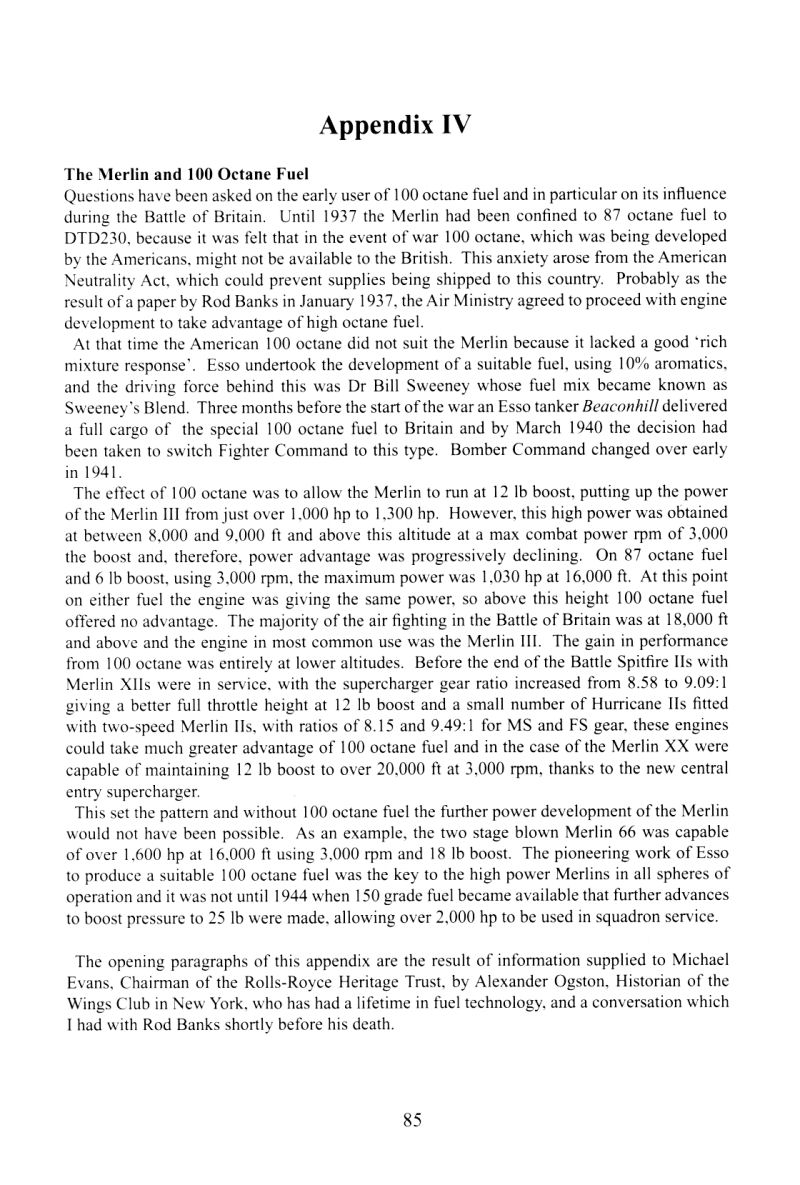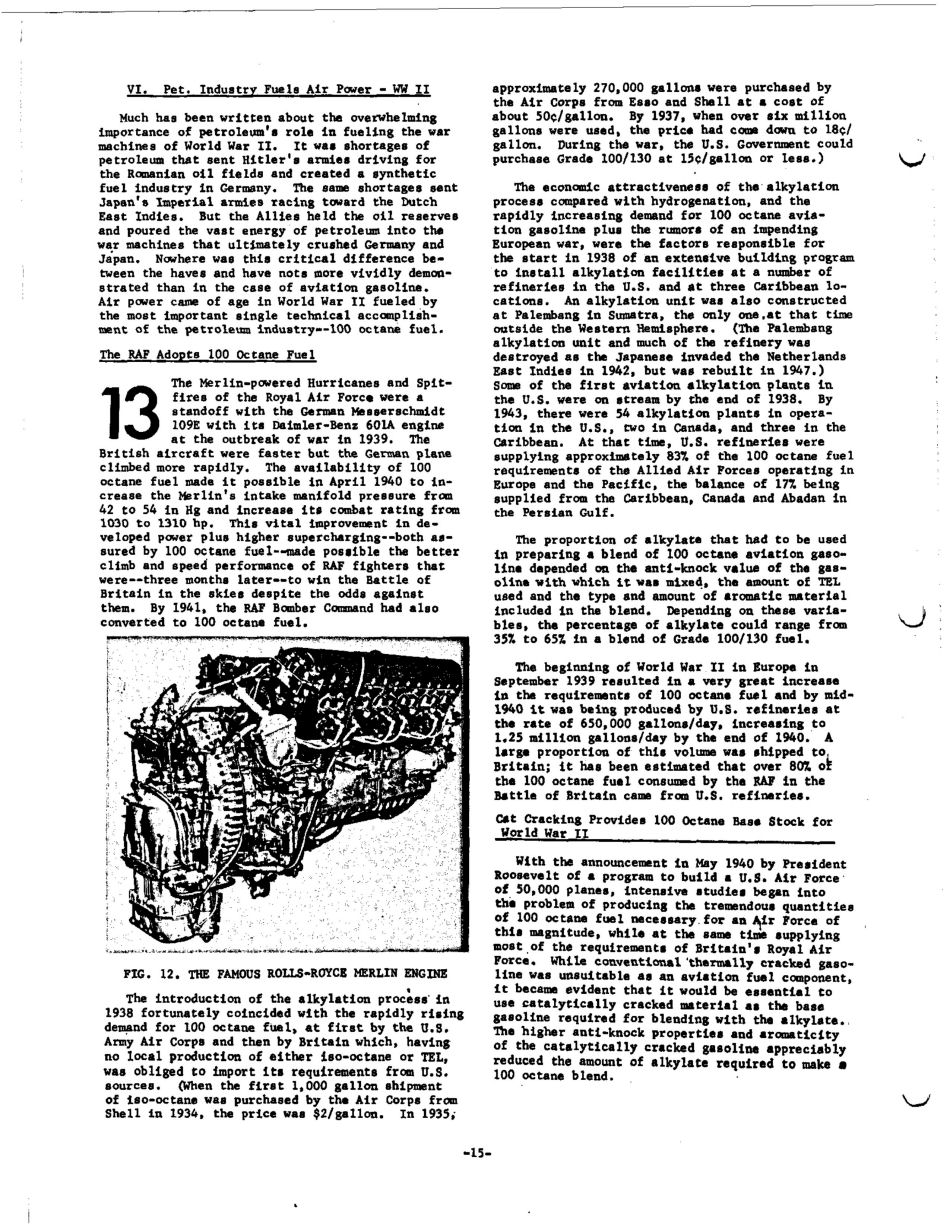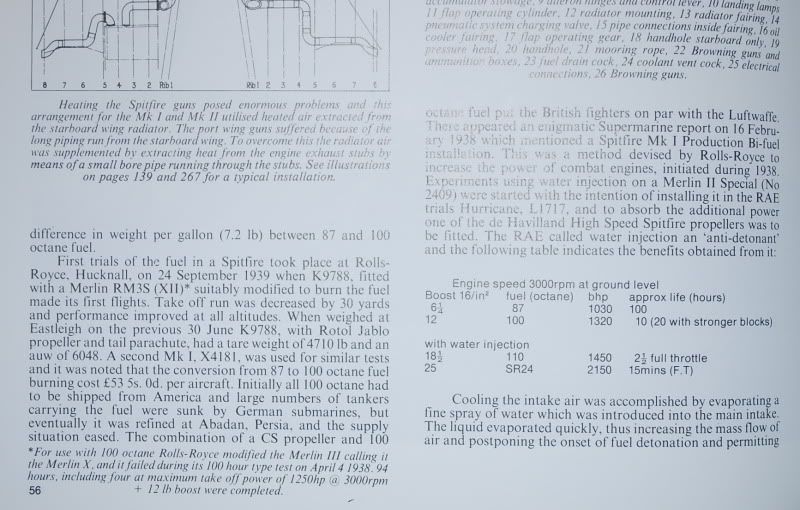
 |
|
|||||||
| FM/DM threads Everything about FM/DM in CoD |
 |
|
|
Thread Tools | Display Modes |
|
|
|
#1
|
|||
|
|||
|
I'm still waiting for someone to post data showing that RAF FC flew even a single Hurricane or Spitfire combat sortie during the BofB using 87 octane fuel. Again, if the RAF FC was flying large numbers of sorties during the BofB using 87 octane fuel, it should be easy to find historical accounts by RAF pilots or in combat reports stating that they flew into combat with 87 octane fuel during the BofB. Yet no such reports or accounts have ever come to light...
So far no takers on my challenge. It's time for the RAF FC BofB 87 octane myth to die; it has been thoroughly busted. |
|
#2
|
|||
|
|||
|
Quote:
|
|
#3
|
|||
|
|||
|
You shld write comics. You will hve an huge success.
It has been alrdy explained and can be found in many documents. I myself illustrated this meaning right her ein this thread by linking to a 1954 FLIGHT articles detailing the evolution of teh Merlin eng during the war with details of wich octane was used.  There is also a second article of FLIGHT that I linked about a respective study of a He111 engine and the Merlin where teh author explained that the Brits eng discovered that the remaining trace of fuel found inside the studied German engine showed that the LW probably was using a fuel with better octane grade than what RAF was using at the time.The article clearly says that it was 92 octane in the German bomber. More over I hve a thousand times explained and showed that there is no sense to believe that 100 octane will provide a tremendous augmentation of pow in an eng that was not specifically built for that fuel. Here is a modern example with Turbo Tech (no eng power needed to drive the compression process) : http://wn.com/octane_rating?orderby=..._time=all_time [EDIT] : As I hve alrdy says I don't know what to write more. What 's for sure is that I am loosing my time at a ... 100% rate ! Last edited by TomcatViP; 03-09-2012 at 12:37 PM. Reason: link updated (directly to Youtube) |
|
#4
|
|||
|
|||
|
I think no one believes your interpretation because your conclusions are wrong.
Quote:
Quote:
This means every supercharged engine benefits from the use of 100 octane fuel as long a the engine control (e.g. Automatic Boost Control) allows the pilot to apply the higher boost. The Merlin engine has a Boost Control Cut-Out device to override the limit of the Boost Control, i.e. it allows the pilot to apply a higher boost than the regular +6 1/2. Of course the higher power may cause a higher stress on other parts, however it is documented which modifications must be applied to a Merlin II/III to allow the use of higher boost. The use and benefit of 100 octane in Merlin II/III is very well documented, it is also very well documented from which time on selected aircraft used it. What is so far not documented is when it was introduced for ALL operational aircraft. |
|
#5
|
||||
|
||||
|
Quote:
Again....  http://www.spitfireperformance.com/spit1vrs109e.html Search for "Engine Power" More... if you aren't completely averse to Wikipedia... http://en.wikipedia.org/wiki/Superma...e_and_armament The evolution of high octane aviation fuels and improved supercharger designs enabled Rolls-Royce to extract increasing amounts of power from the same basic designs. For example, the Merlin II and III which powered the Spitfire I produced a maximum of 1,030 hp (770 kW) using the 87 octane aviation fuel which was generally available from 1938 through to 1941; from early 1940 increasing supplies of 100 octane fuel allowed the maximum power to be increased to 1,310 hp (977 kW) with an increased supercharger boost pressure, albeit for a maximum time limit of 5 minutes. I'd like a 30% increase in power in my car if only for five minutes.
__________________
klem 56 Squadron RAF "Firebirds" http://firebirds.2ndtaf.org.uk/  ASUS Sabertooth X58 /i7 950 @ 4GHz / 6Gb DDR3 1600 CAS8 / EVGA GTX570 GPU 1.28Gb superclocked / Crucial 128Gb SSD SATA III 6Gb/s, 355Mb-215Mb Read-Write / 850W PSU Windows 7 64 bit Home Premium / Samsung 22" 226BW @ 1680 x 1050 / TrackIR4 with TrackIR5 software / Saitek X52 Pro & Rudders |
|
#6
|
|||
|
|||
|
Quote:
Again this makes your assertion ridiculous. In the above article tht I mentioned, the 100 oct dedicated Merlin engine for the 1940/41 era is stated in an article dedicated to RR anniversary in a British renown publication (and not an obscure extract) to be the mkVIII at 1045hp (not sure exactly - look previous pages). This is only an example. To be kind I hve suggested earlier that you made the confusion of SHP and BHP. You might be making the same error here (I say it obviously overplaying my naive side ) . |
|
#7
|
|||
|
|||
|
Quote:
|
|
#8
|
|||
|
|||
|
Alec Harvey-Bailey, The Merlin in Perspective, (Rolls-Royce Heritage Trust, Derby, 1983)
 W.G. Dudek and D. R. Winans, excerpt from AIAA Paper No. 69-779, Milestones in Aviation Fuels, (Esso Research and Engineering Company, New York 1969.)  A. R. Ogston, excerpt from History of Aircraft Lubricants (Society of Automotive Enginees, Inc. Warrendale, PA USA), p. 12.  1)The authors of these articles are respected engineers and fuel technicians who are properly qualified to know how much power the Merlin III could generate on 100 octane fuel. 2)Rolls-Royce were already building Merlins that could run on 100 octane fuel in 1938. http://www.flightglobal.com/pdfarchi...0-%203453.html RM 2M "The normal output at 7,870ft. is 1,265 h.p. and the maximum at 9,500ft., 1,285 h.p. with 1,320 h.p. available for take-off....The maximum potential output of the Merlin II is 1,800 h.p..." 3) Not forgetting either that on August 7 1937 Rolls Royce had a "more-or-less standard Merlin II, running at 18 pounds boost on a special mixture of straight-run gasoline, benzol and methanol with a dash of tetraethyl lead, achieved an output of 1,536 hp at 2,850 rpm over a four minute run." (this was used for the Speed Spitfire). Price The Spitfire Story 2010 p. 107. Ergo the engine was already strong enough to take the extra power. Last edited by NZtyphoon; 03-09-2012 at 01:31 PM. |
|
#9
|
|||
|
|||
|
Quote:
The mot ridiculous at this game were arguabily the french with their twin engined single cranckshaft 2000hp marvel that history has shown how irealistic this formula was (the very 1st french act of sabotage of the German war machine ?) Quote:
Quote:
You are also citing the 1300+HP nbr when the line bellow teh journalist explicitely said that "a fully supercharged" merlins does 1030hp. This in line with what I hve alrdy pointed out (from RR doc sources) that your hve repeateadly mixed SHP (power on the shaft without supercharger plugged) and BHP. I don't know really on what base we can discuss anymore you and me. @Bounder : I made an abstract of the article last week. Pls (re)read it there : http://forum.1cpublishing.eu/showpos...&postcount=457 Last edited by TomcatViP; 03-09-2012 at 05:02 PM. |
|
#10
|
|||
|
|||
|
Quote:
 In fact Merlins still failed type tests at much lower ratings in around November 1939:  and continued to have an increased failure rate even in August 1940: http://www.spitfireperformance.com/dowding.pdf Bottomline, NZTyphoon seems to like to boast about the development of Merlin outputs on single engines and on limited runs on tests stands, ie. 'more or less standard' In connection to the 1536 HP achieved on the Merlin in August 1937 with a curious mix of gasoline, benzol and methanol, perhaps equivalent DB developments should be noted to cool of any undue excitement. [b]11 November 1937. Messerschmitt Bf 109 V13 sets world record with DB 601 Re/III - 1660 PS 8. Juni 1938 8 Juni 1938. Junkers Ju 89 V 2 sets altitude record with 4 × DB 601 Re/IV - 2060 PS each 30 March 1939. Heinkel He 100 V8 sets world speed record with DB 601 Re/V - 2770 PS. The above also explains why the 'Speed Spitfire' was never attempted. There was no 2700-HP Merlin...
__________________
Il-2Bugtracker: Feature #200: Missing 100 octane subtypes of Bf 109E and Bf 110C http://www.il2bugtracker.com/issues/200 Il-2Bugtracker: Bug #415: Spitfire Mk I, Ia, and Mk II: Stability and Control http://www.il2bugtracker.com/issues/415 Kurfürst - Your resource site on Bf 109 performance! http://kurfurst.org 
|
 |
|
|